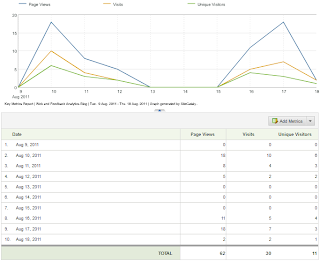The new features have opened up a whole new world of possibilities. Specifically, the incredible insights that can be gleaned from segmentation have me creating segments in my dreams at night. Dashboards have become much more useful with the ability to get big picture overviews and then compare the differences between individual segments and the overall average traffic. Other features are incredibly helpful too, and the enjoyment of the day-to-day activities of analysis and reporting has only increased. Food even tastes better as a result, though I have no quantifiable way to attribute that back to our organization's upgrade to SiteCatalyst 15.
But in my mind, there is at least one casualty of SiteCatalyst 15: the s.prop. I'm not entirely saying that the s.prop is dead (well, I guess I did say that with the term RIP) nor has it completely lost its value. But I do believe it has significantly diminished in its effectiveness compared to the more powerful eVar.
Quickly reviewing the Omniture SiteCatalyst Implementation Manual reminds us that Custom Insight Variable (s.props) can provide us the following types of reports:
- Understanding user navigation through the web site
- Understanding internal user search behavior
- Segmenting traffic by navigation or category
- Segmenting visitor behavior by demographics
There's no denying the insight provided by a pathing report that you get with s.props that you can't get with the good ol' eVar. And having the ability to set up correlations is pretty helpful. But I have to set those up manually. And I only have twelve per report suite.
But with SiteCatalyst 15, I get full subrelations for all my conversion reports. For free. By default. No manual configuration. No limit per report suite. Just plain and sweet, for all my eVar reports.
And ultimately, I care more about conversion data than I do about traffic numbers. While it's nice to know how many times a value was populated into a s.prop, I can get a similar count using an eVar, and then I can break that down by my other reports.
So, agree or disagree? Has the s.prop lost some of it's value when compared to the eVar, with its wonderful full subrelations available in SiteCatalyst 15? What am I missing?

